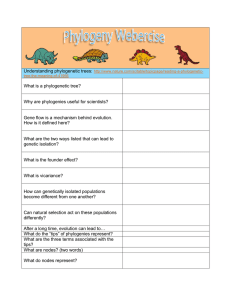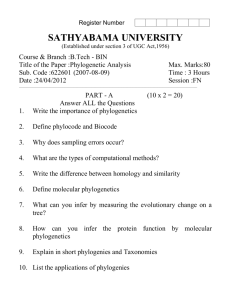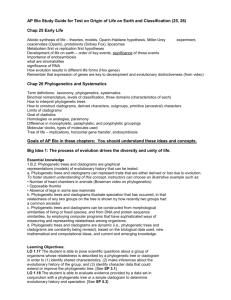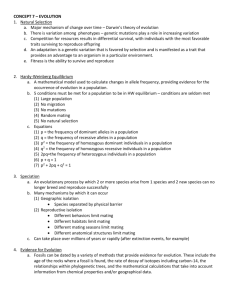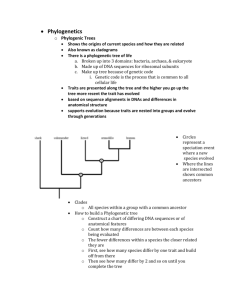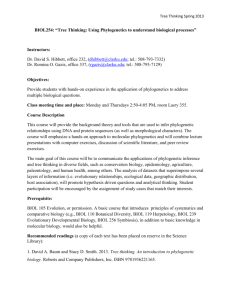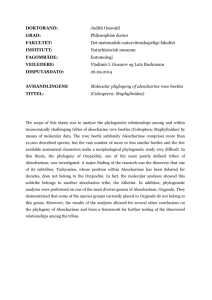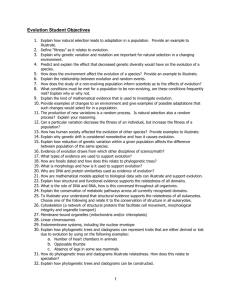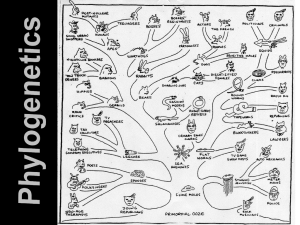Natural Selection Video Guide
advertisement
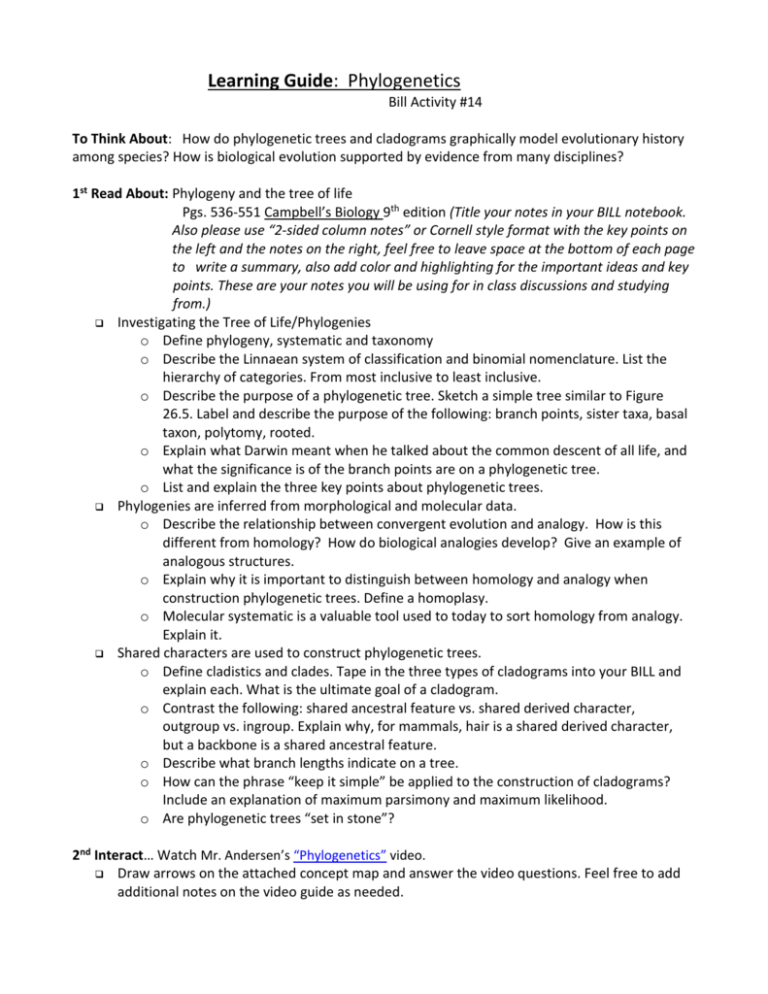
Learning Guide: Phylogenetics Bill Activity #14 To Think About: How do phylogenetic trees and cladograms graphically model evolutionary history among species? How is biological evolution supported by evidence from many disciplines? 1st Read About: Phylogeny and the tree of life Pgs. 536-551 Campbell’s Biology 9th edition (Title your notes in your BILL notebook. Also please use “2-sided column notes” or Cornell style format with the key points on the left and the notes on the right, feel free to leave space at the bottom of each page to write a summary, also add color and highlighting for the important ideas and key points. These are your notes you will be using for in class discussions and studying from.) Investigating the Tree of Life/Phylogenies o Define phylogeny, systematic and taxonomy o Describe the Linnaean system of classification and binomial nomenclature. List the hierarchy of categories. From most inclusive to least inclusive. o Describe the purpose of a phylogenetic tree. Sketch a simple tree similar to Figure 26.5. Label and describe the purpose of the following: branch points, sister taxa, basal taxon, polytomy, rooted. o Explain what Darwin meant when he talked about the common descent of all life, and what the significance is of the branch points are on a phylogenetic tree. o List and explain the three key points about phylogenetic trees. Phylogenies are inferred from morphological and molecular data. o Describe the relationship between convergent evolution and analogy. How is this different from homology? How do biological analogies develop? Give an example of analogous structures. o Explain why it is important to distinguish between homology and analogy when construction phylogenetic trees. Define a homoplasy. o Molecular systematic is a valuable tool used to today to sort homology from analogy. Explain it. Shared characters are used to construct phylogenetic trees. o Define cladistics and clades. Tape in the three types of cladograms into your BILL and explain each. What is the ultimate goal of a cladogram. o Contrast the following: shared ancestral feature vs. shared derived character, outgroup vs. ingroup. Explain why, for mammals, hair is a shared derived character, but a backbone is a shared ancestral feature. o Describe what branch lengths indicate on a tree. o How can the phrase “keep it simple” be applied to the construction of cladograms? Include an explanation of maximum parsimony and maximum likelihood. o Are phylogenetic trees “set in stone”? 2nd Interact… Watch Mr. Andersen’s “Phylogenetics” video. Draw arrows on the attached concept map and answer the video questions. Feel free to add additional notes on the video guide as needed. 3rd Interact… Watch Mr. Andersen’s “Cladograms” video Take notes on it to help you understand how cladograms are constructed. Supplementary Resources: Click the links below for more information to help you learn more about this lesson. Crash Course: “Taxonomy” Kimball’s Biology Pages: Taxonomy and Phylogeny UC Berkeley’s Understanding Evolution:The History of Life—Looking at Patterns UC Berkeley’s Understanding Evolution: Understanding Phylogenies University of Utah Learn.Genetics: All Living Things are Related DNA From the Beginning:Living Things Share Common Genes Scitable: Reading a Phylogenetic Tree—The Meaning of Monophyletic Groups HHMI Biointeractive: Biodiversity and Evolutionary Trees—An Activity on Biological Classification Learn More: For more examples of phylogeny and taxonomy, use the links below: BBC’s GCSE Bitesize Biology: Similarities and Differences TalkOrigins.org: 29 Evidences for Macroevolution Taxonomy of the Armadillo UC Berkeley Understanding Evolution: Nested Hierarchies, the Order of Nature: Carolus Linnaeus
